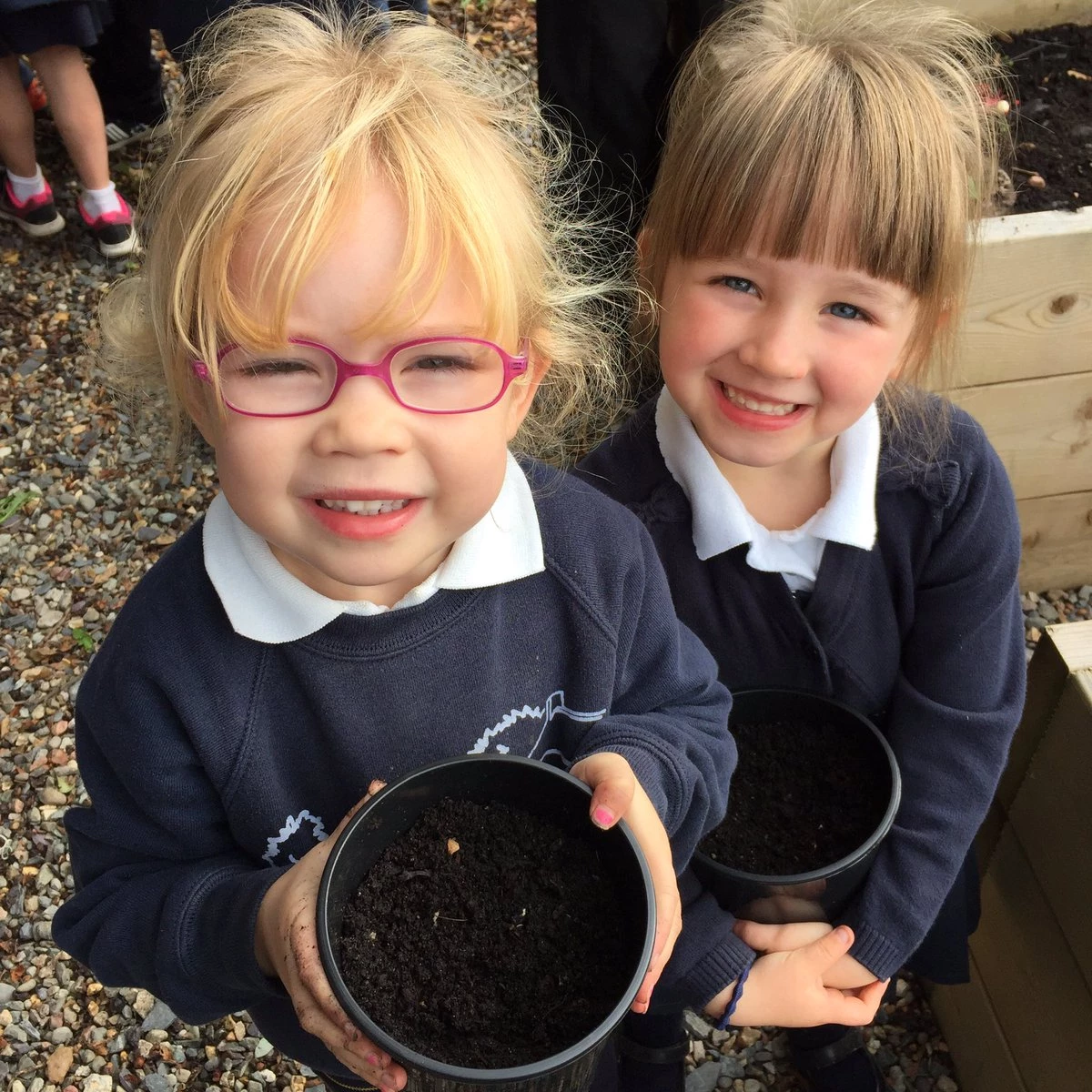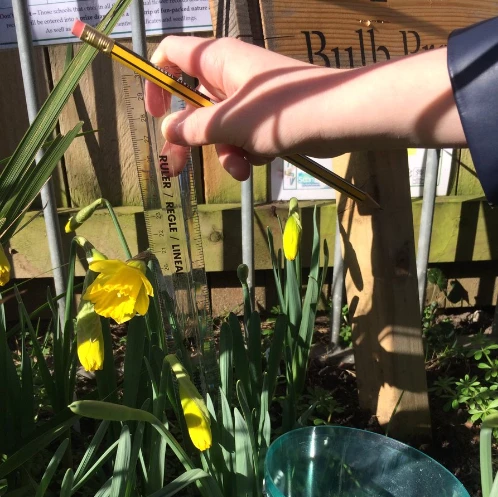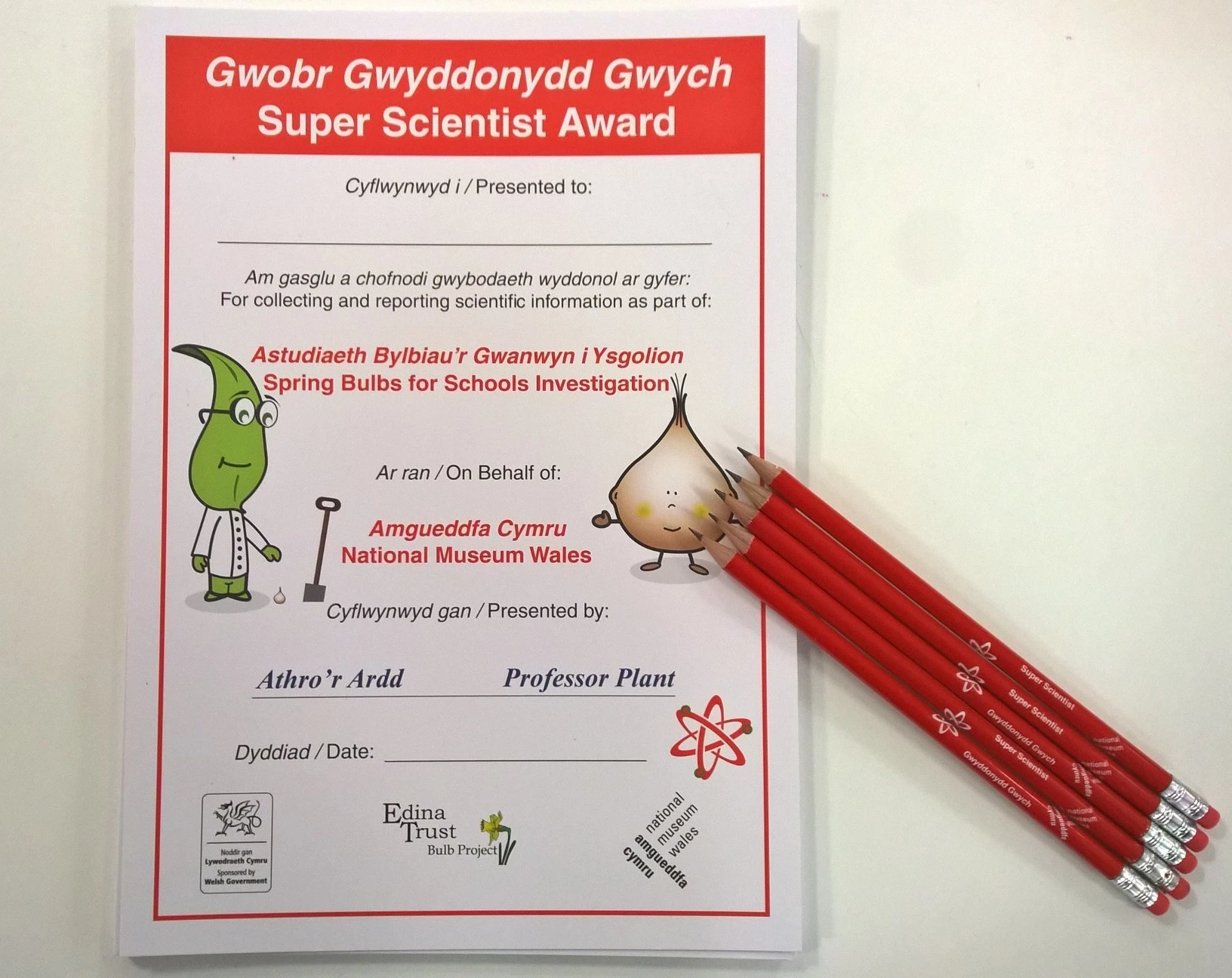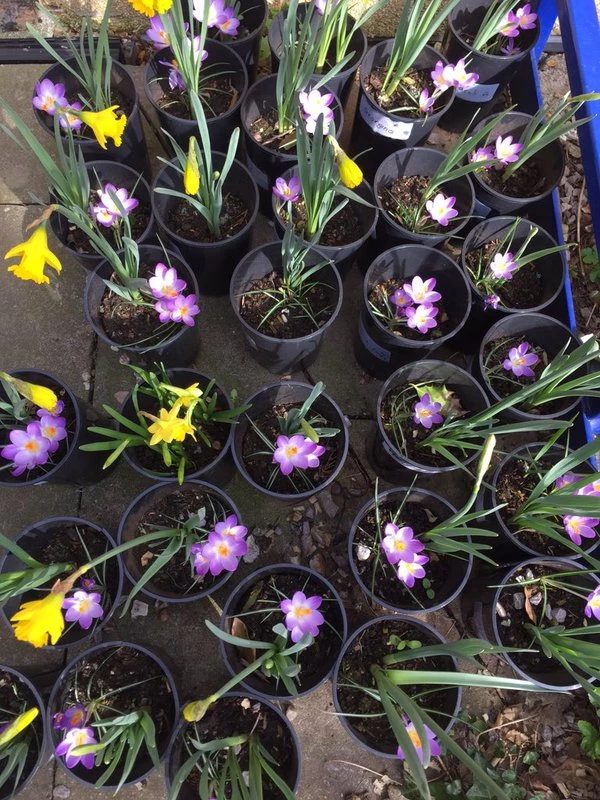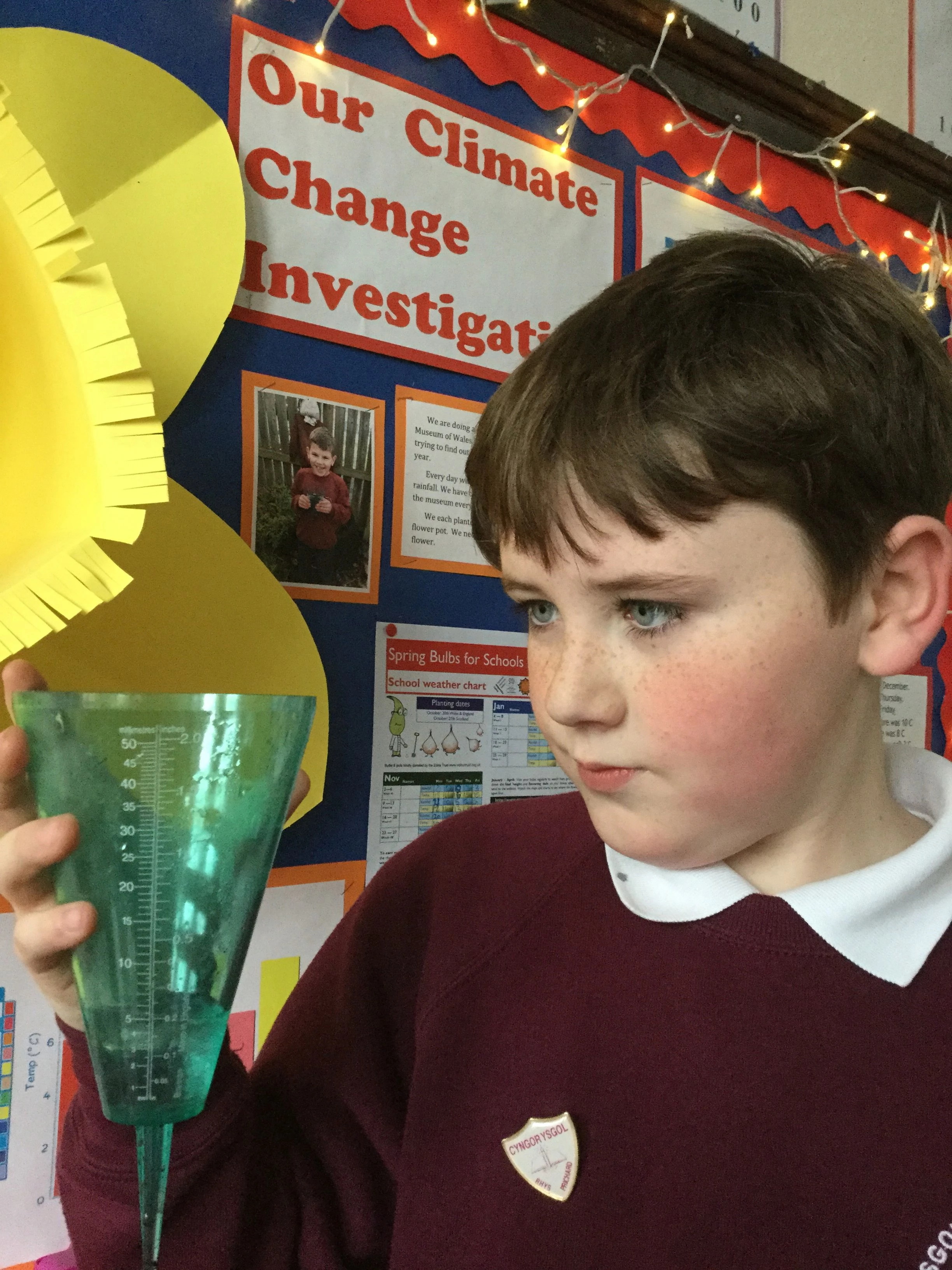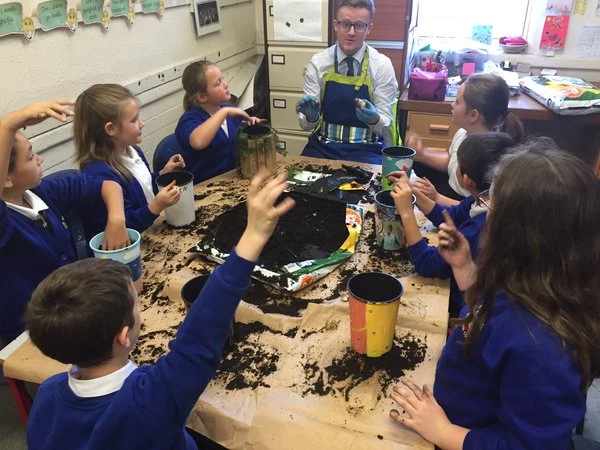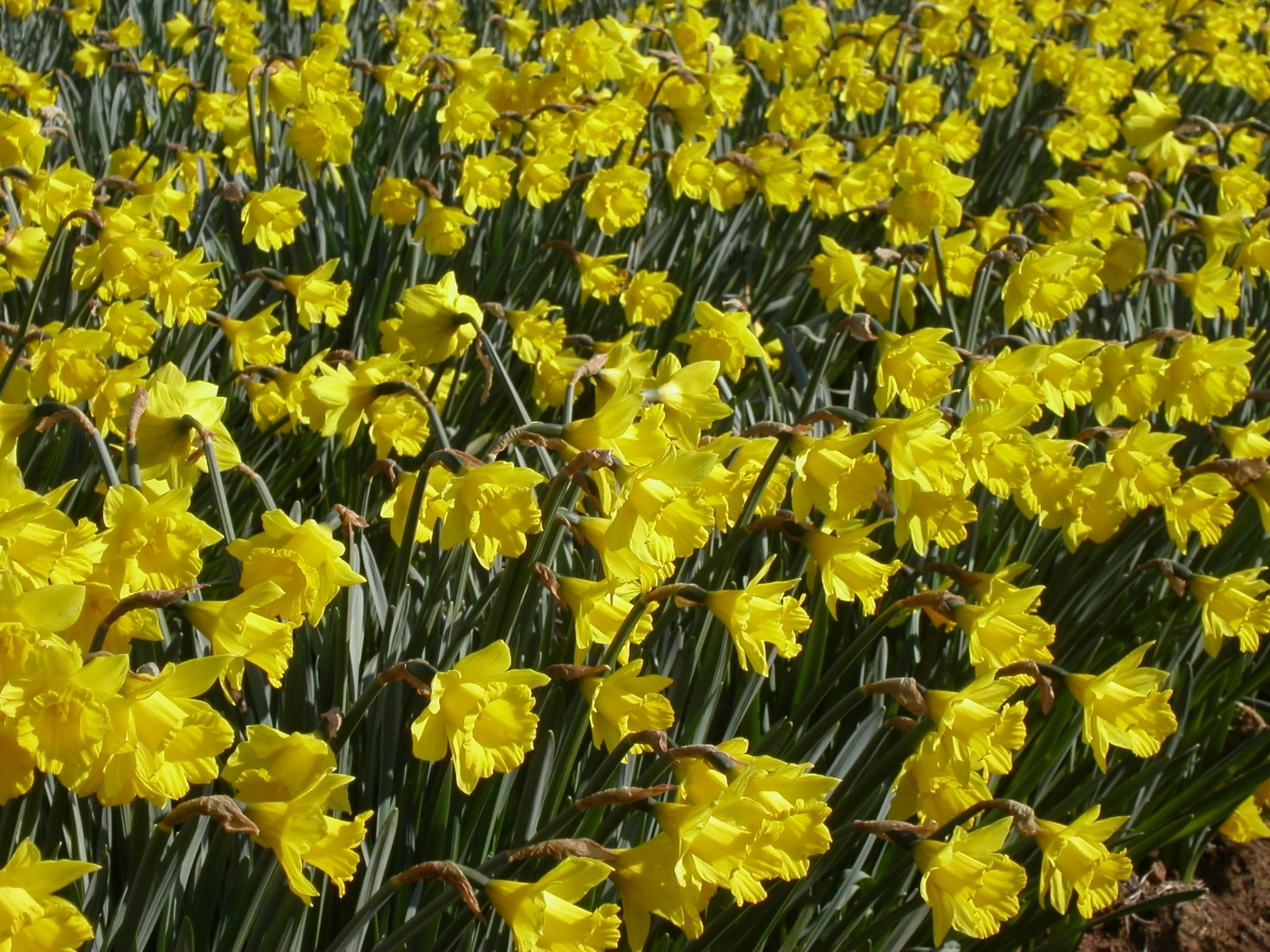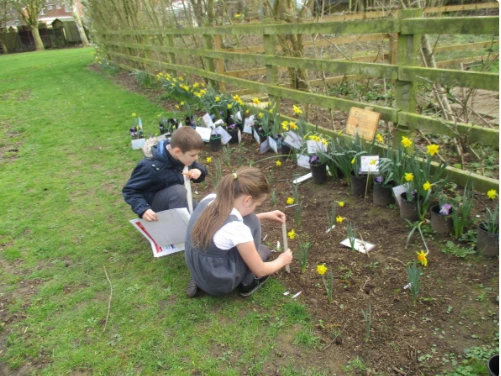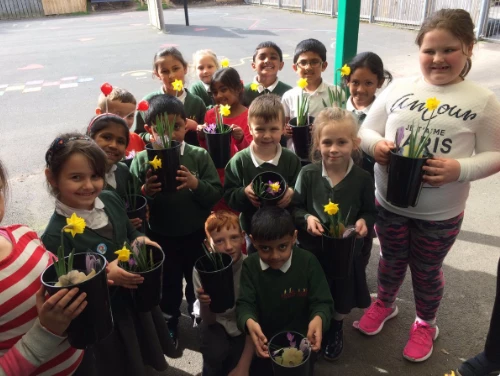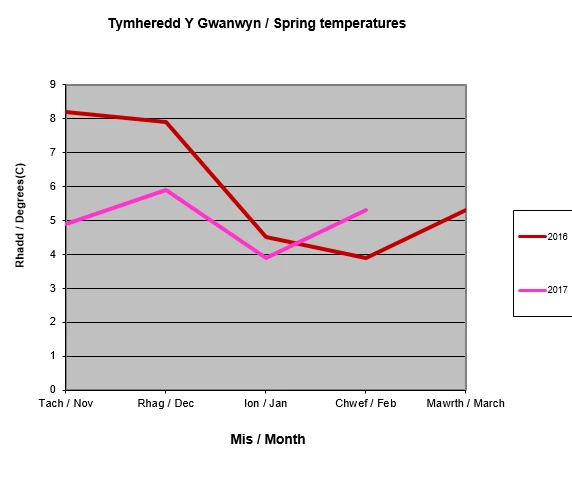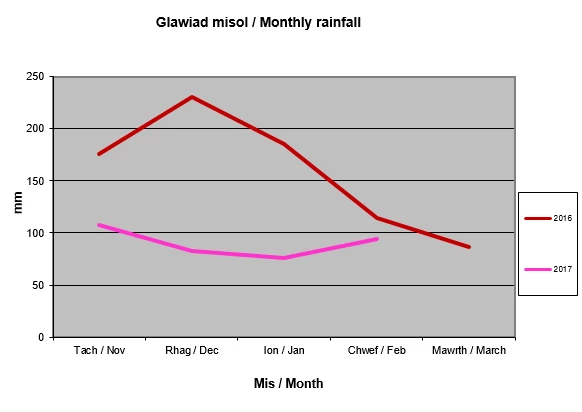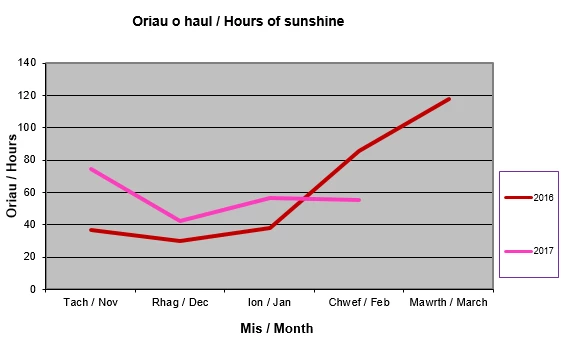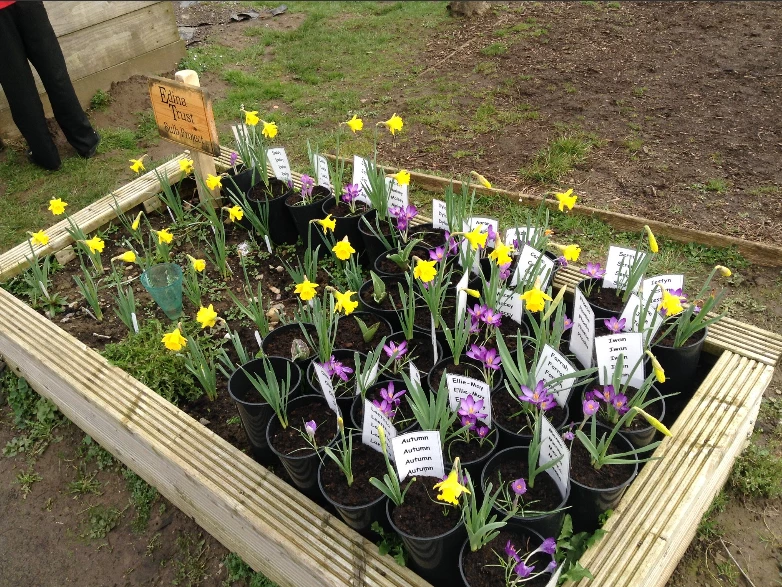Hello Bulb Buddies,
Thank you to all schools who have already entered their flower data! Remember to make sure the dates entered are correct and that the height has been entered in millimetres! We have had a few flowers reported for April and lots of very short crocus and daffodils!
If you spot that your entries need amending, just re-enter them to the website with a comment to explain that the new entry is to replace a previous one.
I have enjoyed reading the comments that have been sent with the weather and flower data over the last fortnight! I’ve attached some of these below. An interesting question was raised by Stanford in the Vale Primary, who asked whether they need to enter multiple flower records if the height and flowering date are the same in each? It is still important to enter this flower data, as the number of flowers at a particular height and particular date will impact on the overall averages for the project.
To work out your schools average/mean flowering height for the crocus and daffodil, add all of your crocus or daffodil heights together and divide by the number of entries for that flower.
If you have one flower at 200mm and one at 350mm the mean would be 275mm. If you have one flower at 200mm and ten flowers at 350mm your mean flower height would be 341mm. This is why it is important that you enter all of your flower records.
Every flower record is important and impacts on the overall results. If your plant hasn’t grown by 31st March, please send in a flower record without a date or height and explain this in the comment section. If your plant has grown but hasn’t produced a flower by 31st March please enter the height without a date and explain this in the comments section.
Keep the questions coming Bulb Buddies! There are resources and activities on the website to help you. Once your plant has flowered, why not draw it and label the different parts of the plant? I would love to see photos of your drawings and will post any that are sent in on my next Blog!
Keep up the good work Bulb Buddies!
Professor Plant
Your comments:
We’ve had lots of lovely comments about your plants, sent in with both weather and flower data:
Ysgol Y Wern: Mae'r bylbiau i gyd wedi egnio ac mae sawl blodyn crocws i'w weld!! Mae'r bylbiau ddirgel yn edrych yn diddorol iawn gyda streipiau ar y ddail!
Ysgol Pennant: Mi roedd yn hwyl iawn i tyfu crocws a i weld o.
Stanford in the Vale Primary School: 17 daffodils have all flowered on the same day! Do we still have to enter individual flowers? They all measure the same height! Regards R.
Professor Plant: Hi Stanford in the Vale, I’ve answered your question in detail above as it was the star comment this week! It’s a very good question, but all of the individual flower records are important and can help us to create a bigger picture of the results! I have a special task for you this week, why not work out your school’s average flowering date for this year and last year, and let me know whether your plants flowered earlier or later on average this year! There’s a fun game on BBC Bitesize to help you with Mode, Median, Mean and Range! http://www.bbc.co.uk/bitesize/ks2/maths/data/mode_median_mean_range/play/
St Robert's R.C Primary School: I am so glad my bulb has flowered.
St Mary's Primary School: Our first crocus flower has opened. We are all really excited.
Ellel St John's CE Primary School: They've grown quite quickly and are just opening.
Stanford in the Vale Primary School: We will send photographs later today. The crocus have a beautiful radiant deep purple colour.
Rougemont Junior School: Our Crocus are flowering and our Daffodils are growing well. We hope it will be sunny tomorrow. I think we are in luck!!!
Tonyrefail Primary School: Hi Professor Plant most of our plants have grown. We are measuring them. Nine of are crocuses have flowered.
Garstang St. Thomas' CE Primary School: We had a couple of frosty mornings this week but our crocus plants are still flowering and all our daffodils have buds on them now.
Beulah School: A lot of crocuses have flowered but none of the daffodils have yet.
Boston West Academy: 2 daffodils have grown
Ysgol Deganwy: all of the plants came out the soil yay!
Rougemont Junior School: our crocus is growing well but needs sunshine and warmth to open its flowers.
Barmston Village Primary School: The bulbs are starting to grow!
Loch Primary School: The plants have grown quite a lot!
Ysgol Deganwy: All of the bulbs have come up from the soil.
Broad Haven Primary School: Our daffodils and crocus now have leaves but no flowers yet.
Loch Primary School: We are happy to see our plants growing!
Tonyrefail Primary School: Our Crocuses have also started to grow.
Garstang St. Thomas' CE Primary School: We were back into school on Tuesday. We had a surprise as J's crocus had blossomed and a lot of us have noticed our plants have grown buds so we are all on stand-by to record our blooms too. Storm Doris came on Thursday so we didn't catch all the rain as most of it was sideways! Luckily none of our bulb pots were blown over.
Professor Plant: Fantastic Bulb Buddies, I'm glad to hear you are watching your plants so carefully! Don't worry about sideways rain as the rain gauge is designed to collect a sample of rainfall. Keep up the good work Bulb Buddies!
We’ve had lots of insightful comments about the weather, and many of you commented on storm Doris. More information on storm Doris can be found here: http://www.metoffice.gov.uk/barometer/uk-storm-centre/storm-doris
St Robert's R.C Primary School: Storm Doris wedi chwythu y brigau oddiar y coed ar dydd iau.
Ysgol Pentrefoelas: Yn wlyb iawn ar Dydd Llyn ond wedyn yn mynd yn sych.
Ysgol Y Wern: Oer iawn, iawn wythnos yma. Wedi bwrw eira ar ddydd Gwener.
Carnbroe Primary School: We had lots of rain on Tuesday and we were slipping about the garden while we were checking on our plants. Still no flowering yet. Nearly everyone's bulb has begun to show shoots. C's bulb has not come through the soil yet.
Professor Plant: Ooo be careful if the ground is slippery Bulb Buddies! I hope C’s plants grow, but if they haven’t grown by 31st March please let me know by entering a flower record but leaving the date and height blank. It’s as important to record this as it is flower records!
Stanford in the Vale Primary School: Hello, this week has been quite chilly and on Monday it was icy. It has been rainy to. Bye Bye.
Rougemont Junior School: It's going well. Hopefully it will be sunny tomorrow.
Arkholme CE Primary School: This week the Temperature has gone down quite a bit on Thursday. And there was not a lot of rain on Friday and Wednesday are bulbs are starting to grow so we are quite pleased. Thank you very much.
Garstang St. Thomas' CE Primary School: It’s been getting colder this week but our bulbs are still growing.
Darran Park Primary: The temperature has been quite consistent over the week. There has been a drop in the amount of rainfall this week.
Henllys CIW Primary: It has been snowy a little bit this morning.
Staining C of E Primary School: There has not been much rain during the second part of the week. It has been a bit warmer as well. There was some rain on Monday and Tuesday.
Arkholme CE Primary School: This week was a very dull and wet week. There was a little bit of growth from the bulbs that we planted. It was also a very cold week on Friday the sun came out and the temperature rised. Best wishes.
Stanford in the Vale Primary School: Hello, On monday it was teacher training day so we couldn't record it. But this week it has been hot and cold. On Thursday we had storm Doris so it was very cold. Bye,bye.
Ysgol Rhostyllen: This is fun.
Our Lady of Peace Primary School: I liked doing the temperature because it was fun.
Broad Haven Primary School: Yr 5 are in LLangrannog this week so we are recording the weather. Rain and gales at the end of the week.
Professor Plant: Thank you for filling in Bulb Buddies, I hope you enjoyed the project! Good work.

